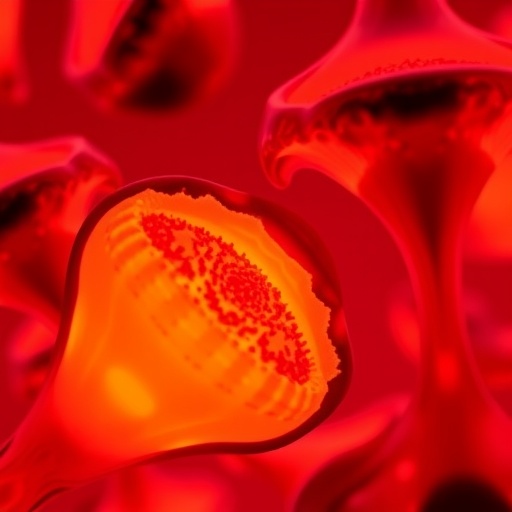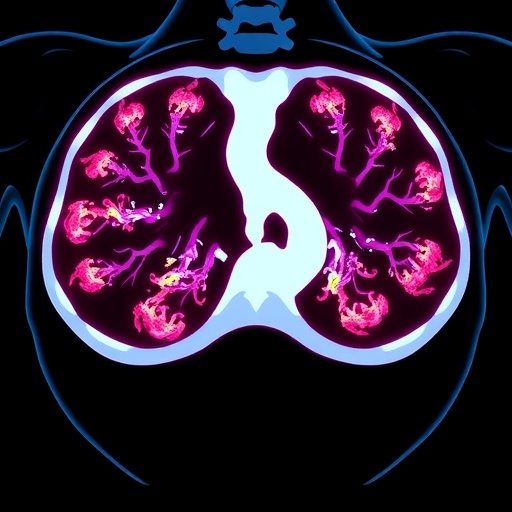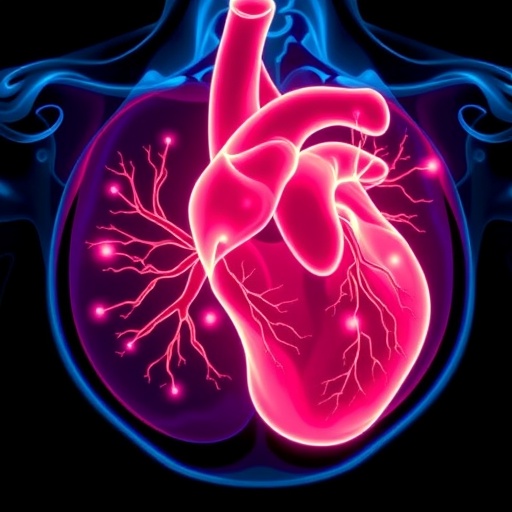In a groundbreaking advance that may reshape future cancer therapies, recent research has illuminated the potent cytotoxic and pro-apoptotic properties of an ethanolic extract derived from the marine diatom Chaetoceros socialis. Scientists have revealed that this natural compound exerts significant anti-cancer effects on two formidable cancer cell lines: prostate adenocarcinoma (LNCap) and glioblastoma multiforme (U-87 MG). Utilizing in vitro models, the study’s findings suggest an intricate modulation of critical intracellular signaling pathways including AKT/PTEN, mTOR, BAX/BCL2, and Caspase cascades, which are well-known arbiters of cell survival and programmed cell death. This multifaceted intervention by a marine bioactive extract opens promising avenues for oncology, given the tenacity and treatment resistance typical of prostate and brain cancer cells.
The research taps into the ever-expanding field of marine biotechnology, which seeks to uncover natural compounds with therapeutic potential from oceanic biodiversity. Chaetoceros socialis, a unicellular photosynthetic diatom, is traditionally recognized for its ecological role rather than pharmacological properties. Yet, as biotechnology explores nature’s hidden pharmacopeia, compounds such as those extracted from this species emerge as intriguing candidates for targeting malignancies. By employing ethanol as a solvent to yield an extract rich in bioactive molecules, researchers have accessed a complex chemical repertoire capable of interfering with cancer cell homeostasis on multiple fronts.
Prostate cancer and glioblastoma represent two of the most challenging oncological burdens worldwide, both marked by aggressive cellular proliferation and notable resistance to conventional therapies. LNCap cells, derived from metastatic prostate carcinoma, and U-87 MG cells, a widely studied glioblastoma line, serve as robust in vitro models for evaluating anti-cancer efficacy. The study’s demonstration of cytotoxicity—marked decreases in viability—paired with clear indicators of apoptosis, underscores how this marine extract destabilizes survival signaling pathways that cancer cells rely upon to evade death.
At the heart of these pathways lies the AKT/PTEN axis, a crucial regulator of cell growth, metabolism, and survival. AKT kinase activity promotes oncogenic processes, while PTEN acts as a tumor suppressor by negatively regulating AKT. The ethanolic extract from Chaetoceros socialis was shown to modulate this axis, presumably tipping the balance toward PTEN-mediated suppression of AKT activity. Such modulation mitigates proliferative signals, effectively sensitizing cancer cells to apoptosis and halting unchecked growth.
Coupled with this, the mammalian target of rapamycin (mTOR) pathway, a downstream node in cellular signaling that governs protein synthesis and cellular metabolism, also exhibited altered activity. Aberrant mTOR activation is a hallmark of many cancers, including prostate and glioblastoma. By dampening mTOR signaling, the extract potentially disrupts the biosynthetic and anabolic machinery cancer cells harness to sustain rapid proliferation and survival in hostile microenvironments.
In the apoptosis regulatory landscape, the BAX/BCL2 ratio serves as a critical determinant of cell fate. BAX promotes apoptosis by permeabilizing mitochondrial membranes, facilitating cytochrome c release, whereas BCL2 functions antagonistically, inhibiting this process. The study’s findings reveal a shift in the BAX/BCL2 balance toward pro-apoptotic signaling after treatment with the marine extract. This suggests that the compounds contained within the extract instigate mitochondrial-mediated apoptotic mechanisms, reactivating death pathways that cancer cells often suppress to survive.
Further downstream, the activation of Caspase enzymes—the key executors of apoptosis—was noted, signifying that the extract’s pro-apoptotic triggers culminate in the dismantling of cancer cells. Caspase activation leads to systematic cleavage of cellular proteins and DNA fragmentation, hallmarks of irreversible apoptosis. Recognition of these effects in prostate and glioblastoma cell lines—cancers notorious for apoptosis evasion—underscores the therapeutic potential of the bioactive agents found in Chaetoceros socialis.
Importantly, this approach targets multiple regulatory nodes simultaneously, offering a multi-pronged attack that might overcome resistance mechanisms often limiting monotherapeutic interventions. Multi-target strategies are crucial given the genomic and phenotypic heterogeneity of tumors, wherein single-pathway targeting frequently leads to relapse. The extract’s polypharmacological profile could represent a natural prototype for combination treatments or even inspire synthetic analogs designed to emulate its efficacy with optimized pharmacokinetics.
From a broader perspective, these findings spotlight the ocean’s largely untapped reservoir of pharmacologically active substances. Marine microorganisms like diatoms have evolved complex biochemical arsenals to thrive in competitive aquatic ecosystems, often producing compounds with unique structural features not commonly found in terrestrial organisms. The therapeutic translation of these features could redefine cancer treatment paradigms, providing new weaponry against diseases that remain leading causes of mortality globally.
Moreover, the study exemplifies the power of integrating molecular biology techniques with natural product chemistry. By deciphering how an extract influences intracellular signaling circuits, researchers can precisely characterize mechanisms of action, enabling rational development of therapeutic candidates. This mechanistic clarity is vital in drug discovery to predict potential side effects, optimize dosage, and anticipate resistance profiles.
The therapeutic promise revealed here also raises critical questions for subsequent research. Elucidating the exact molecular constituents responsible for the observed bioactivity remains a priority, as crude extracts comprise myriad compounds whose individual and synergistic effects need deconvolution. Furthermore, in vivo validation within animal models will be essential to confirm efficacy, bioavailability, and safety, stepping stones before contemplating clinical trials.
Equally, understanding the pharmacodynamics and pharmacokinetics of the extract’s active components will influence dosing strategies and delivery mechanisms. Given the blood-brain barrier’s notorious restrictiveness, especially relevant for glioblastoma treatment, strategies enhancing central nervous system penetration are crucial if these findings are to translate clinically. Encapsulation technologies or structural modifications might serve to this end.
This line of investigation also intersects with personalized medicine. Tumor heterogeneity requires therapies tailored to specific molecular signatures, and the pathways modulated here—AKT/PTEN, mTOR, BAX/BCL2, Caspases—are variable across patients. Diagnostic tools capable of profiling tumors for these signaling aberrations would complement targeted use of marine-derived compounds, maximizing therapy responsiveness.
From a societal viewpoint, developments like these could reduce reliance on highly toxic chemotherapeutics, offering treatments with potentially fewer side effects due to their natural origin and multi-targeted nature. This aligns with the global agenda towards greener, more sustainable pharmaceutical innovation, underscoring the relevance of ecological conservation and biodiversity preservation.
As research accelerates in this domain, the integration of omics technologies—proteomics, transcriptomics, metabolomics—will deepen understanding of cellular responses to marine extracts, revealing off-target effects and novel molecular intersections. High-throughput screening combined with artificial intelligence-driven drug design could expedite the discovery process, translating marine biology insights into clinical success stories with unprecedented speed.
In conclusion, the presented study offers a compelling narrative of how a seemingly obscure marine microorganism—Chaetoceros socialis—harbors chemical agents with profound anti-cancer activity by rewiring key survival and apoptosis pathways in prostate and glioblastoma cells. This dual modulation of growth inhibition and programmed cell death mechanisms not only rejuvenates natural product research in oncology but also beckons a new era where marine ecosystems contribute front-line therapies against humanity’s deadliest diseases. As the scientific community continues to unravel nature’s complexities, the ocean may well harbor the cures of tomorrow.
Subject of Research: Cytotoxic and pro-apoptotic effects of Chaetoceros socialis ethanolic extract on prostate (LNCap) and glioblastoma (U-87 MG) cancer cells through modulation of the AKT/PTEN, mTOR, BAX/BCL2, and Caspase pathways.
Article Title: In vitro cytotoxic and pro-apoptotic effects of Chaetoceros socialis ethanolic extract on prostate (LNCap) and glioblastoma (U-87 MG) cells via modulation of AKT/PTEN, mTOR, BAX/BCL2, and Caspase pathways.
Article References:
Asoudeh-Fard, A., Jahromi, H.H., Zare, Z. et al. Med Oncol 42, 488 (2025). https://doi.org/10.1007/s12032-025-03034-3
Image Credits: AI Generated
Tags: AKT/PTEN mTOR BAX/BCL2 Caspasebioactive molecules from marine sourcescancer cell death pathwaysChaetoceros socialis extractcytotoxic properties of diatom extractglioblastoma multiforme researchintracellular signaling pathways in cancermarine biotechnology cancer therapynatural compounds in oncologypro-apoptotic mechanisms in cancerprostate adenocarcinoma treatmenttherapeutic potential of marine biodiversity





